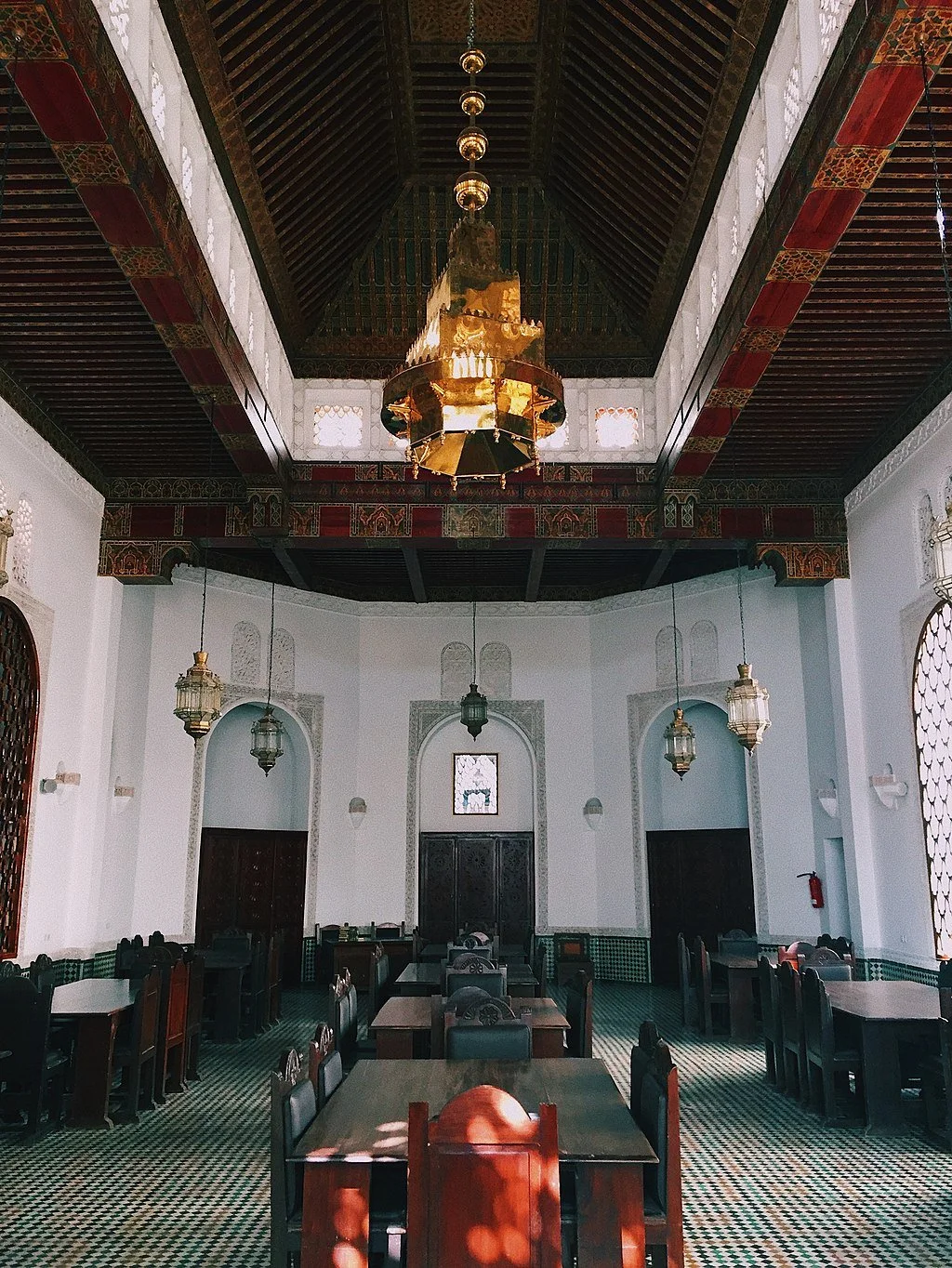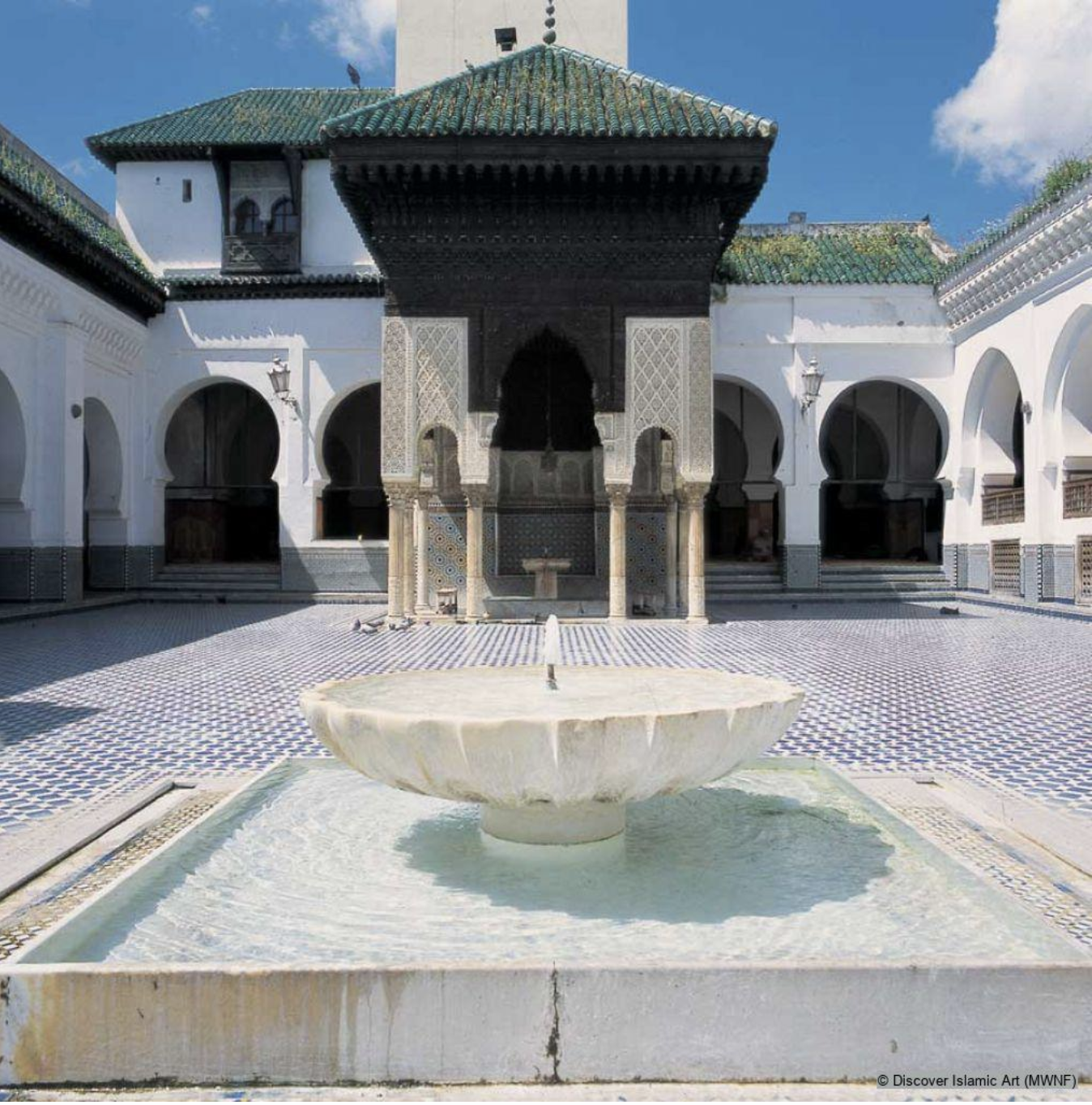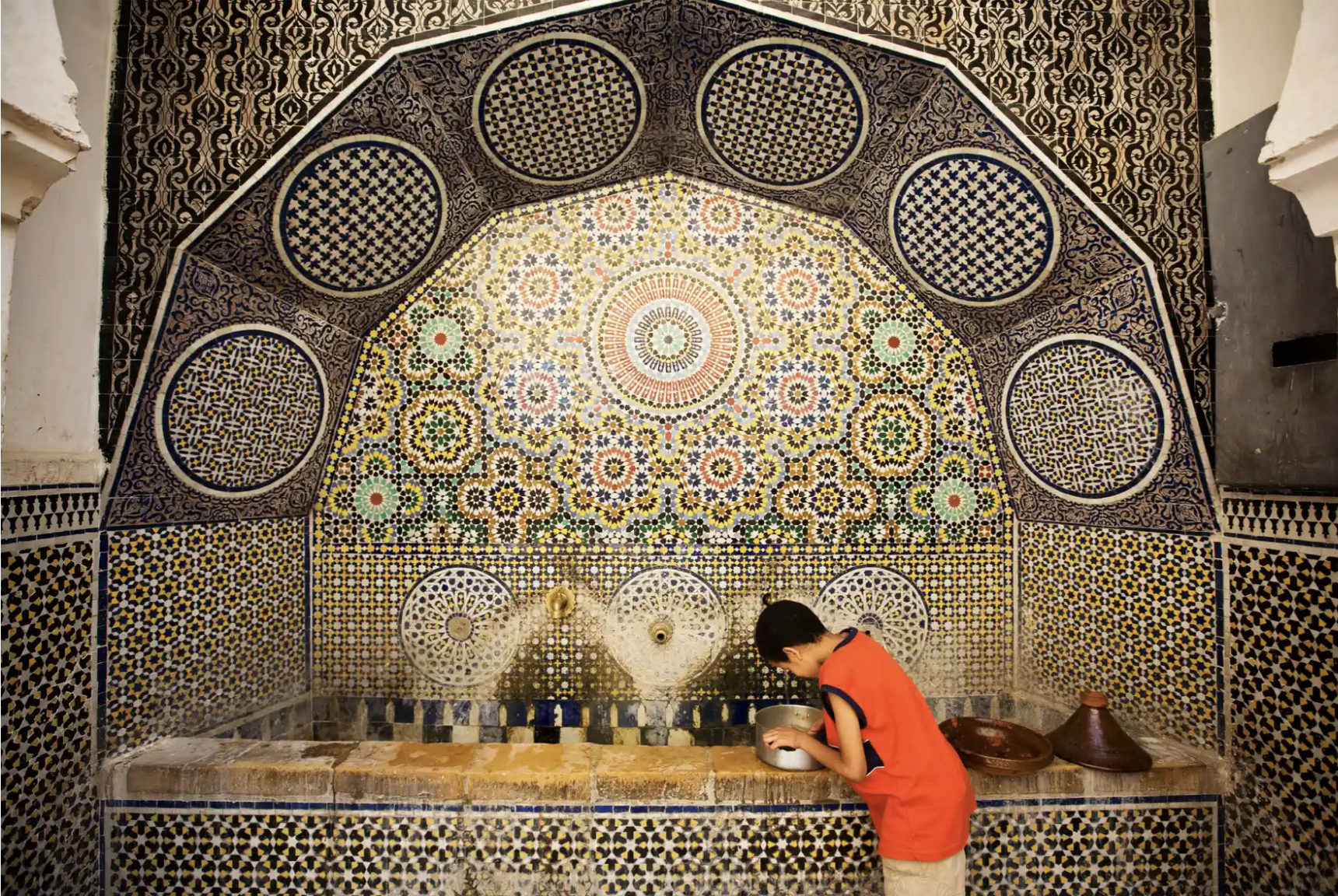Learn more about Fatima Al-Fihri below
Fatima Al-Fihri and the University of Al Qarawiyyin
It is said that Fatima Al-Fihri instructed construction to begin during the holy month of Ramadan during the year 859 CE. She vowed to fast every day until the mosque was built and upon its completion she offered prayers of thanks. This reflects both her patience and determination to see the project through to completion.
Interestingly, the first thing Fatima Al-Fihri had built in the university was a well for workers who were constructing the building to drink from. This is again reflective of her character as she cared for the wellbeing of those that were building the university. As we already know she was also environmentally conscious as she only used resources from the land that she purchased to build the mosque and University of Al Qarawiyyin.
Fatima Al-Fihri studied at the university after it was built and received a diploma upon completion of her studies. The diploma was carved on to a plank of wood and although it has weathered over time, it has survived to this day:
How did Al Qarawiyyin develop over time?
The mosque was originally about 30 metres long with a courtyard and four transverse aisles. It was located near the Suq al-Attarin (spice market of Fes) and is one of the largest mosques in Africa. As we know, Fatima Al-Fihri’s decision to build a mosque and university was influenced by the large influx of refugees from Spain. Indeed, the building is heavily influenced by the architectural style of Islamic Spain - particularly the square stone minaret, the use of wood and the zilij style of mosaic tilework (which came from Alhambra Palace).
However, the building combined it’s Spanish influence with traditional North African mosque traditions - particularly it’s T-shaped plan with an elevated central aisle at a right angle to an aisle fronting the qibla wall.
The mosque underwent major reconstruction in 1135 when Morocco was under the rule of Sultan Ali Ibn Yusuf. He ordered the mosque to be extended from 18 to 21 aisles which meant that the overall structure covered an area greater than 3,000 square metres. Many of the features which still stand today were added later by Sultan Abdallah Ibn Al-Shaikh in the early 17th century, including the courtyard’s blue and white tile floor, marble ablution fountain and the two fountain pavilions.
Over time, the mosque’s library grew to eventually house a collection of 4,000 books and manuscripts written by esteemed scholars of the Islamic Golden Age; these include a 9th century version of the holy Qur’an and 10th century account of the Prophet Muhammad’s life.
Pronunciation Guide
Unfortunately, the condition of the building deteriorated substantially over the years - particularly as a result of rainwater seeping in and flowing under the floorboards causing rot to set in and putting the foundations of the building at risk. In 2012, architect Aziza Chaouni was asked to restore the building and re-open the library to the public by the Moroccan Ministry of Culture.
This was an extremely challenging task; Chaouni told TED.com that despite the reconstruction of the library over the years, “it still suffered from major structural problems, a lack of insulation and infrastructural deficiencies like a blocked drainage system, broken tiles, cracked wood beams, exposed electric wires and so on”.
Recent Renovations
It seems Chaouni took inspiration from Fatima Al-Fihri as she installed new sustainable technologies such as solar panels and water collection for garden irrigation and also took great care to restore the library’s original courtyard fountains by using local materials and construction systems. The project took more than three years to complete but re-opened in May 2016 boasting a reading room, book stacks, conference room, state of the art manuscript restoration laboratory and a rare books collection. In another touch the appears to be a nod to the founder of the building, Chaouni commissioned furniture from local craftsmen who used wood from Fes and she also asked them to build courtyard umbrellas to provide both shade and mist on hot summer days. We are certain that Fatima Al-Fihri would be proud of the attention to detail and thoughtful restoration project Aziza Chaouni completed.















